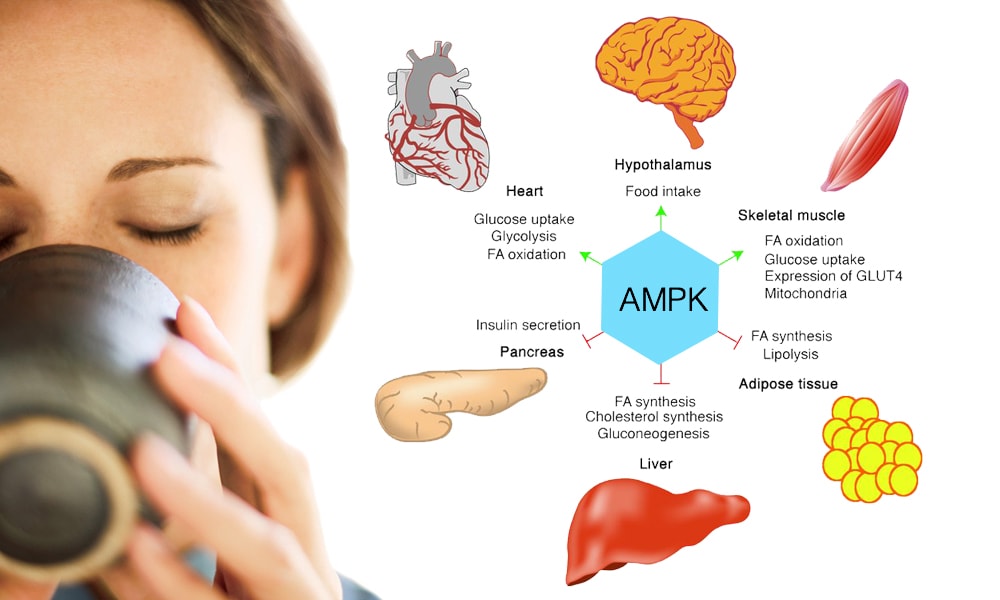 What Gynostemma pentaphyllum is
What Gynostemma pentaphyllum is
In China Gynostemma pentaphyllum or Jiaogulan, is considered as the herb of immortality. (1) It is an herbaceous climbing vine of the family Cucurbitaceae (cucumber or gourd family) indigenous to the southern reaches of China, Korea, Japan and Vietnam. (2) Gynostemma pentaphyllum has been widely used in Chinese medicine for the treatment of various diseases, including hepatitis, diabetes and cardiovascular disease. Modern medical research has s hown that Jiaogulan exhibits a variety of pharmacological properties, including anti-inflammatory, antioxidative, lipid metabolism regulatory, antiproliferative, neuroprotective and anxiolyticactivities. Therefore, Jiaogulan has been used for the treatment of chronic diseases like cancer, diabetes, obesity and others. Gynostemma pentaphyllum is also widely used as a health supplement in noodles, beverages, biscuits, face washes and bath oils.(3)
More than 200 compounds have been identified as being derived from Jiaogulan and can be categorized according to their chemical structures into sterols, flavonoids, saponins, polysaccharides and others.(3) Jiaogulan can be drunk as a tea, as a liquid extract, or taken as a concentrated extract in capsules. The standard dose is 450 mg daily. It is non-toxic so can be used for several months without adverse effects.
What AMPK is
Among others, Gynostemma pentaphyllum promotes the activation of an enzyme called AMP-activated protein kinase (AMPK). AMPK is a sensor of cellular energy that helps to maintain energy balance at both the cellular and body levels. Since type 2 diabetes is considered as a disorder of energy balance caused by high caloric consumption and obesity, there has been much interest in AMPK as a drug target. It isalso becoming apparent that two other major causes of human death and morbidity, cancer and inflammatory disease, can be viewed as metabolic derangements. AMPK inhibits cell growth and proliferation, and promotes the glucose-use and energy-efficient mitochondrial oxidative metabolism rather than glycolysis, making it a potential drug target in the fields of cancer and inflammatory disease.(4)
Upon activation, AMPK phosphorylates downstream targets and inhibits ATP-consuming anabolic pathways including fatty acid and cholesterol synthesis. At the same time, catabolic pathways that produce ATP, such as glycolysis, fatty acidoxidation, and glucose uptake, are stimulated.
Cellular AMPK activation decreases with age. Additionally, factors like over-nutrition, obesity and sedentary life reduce AMPK activity. AMPK is found inside every cell and serves as your body’s “master regulating switch.” It determines body fat composition and to an extend it controls longevity. Increasing AMPK activation, we can reduce many of the destructive factors of aging, thus enabling cells to return to their youthful vitality.(5)
The reduced AMPK signaling, results to a range of damaging conditions including elevated blood sugar, insulin resistance, increased belly fat, chronic inflammation, high cholesterol and triglycerides, decreased numbers and function of mitochondria, increased accumulations of abnormal or damaged proteins in our cells that lead to neurodegeneration. There are studies showing that when AMPK signaling is boosted, these deteriorating processes are reversed, restoring metabolism, preventing several chronic diseases, and contributing in longevity and better quality of life.(5)
Research on Gynostemma pentaphyllum and AMPK
According to a 2011 study, that Gynostemma pentaphyllum contains two novel dammarane-type saponins designated as damulin A and damulin B which strongly activate AMPK. Researchers concluded that that activation of AMPK by damulins A and B may contribute to beneficial effect of Gynostemma pentaphyllum on glucose and lipid metabolism.(6)
In an animal study (2012), an ethanol extract of Gynostemma pentaphyllum called “actiponin”, lessened obesity by activating AMP-activated protein kinase. Gauhar and coworkers evaluated the ability of the ethanol extract of G. pentaphyllum to activate AMPK. This extract was then subjected to physical modification by autoclaving at 121°C for four hours. This process increased AMPK phosphorylation and this result was correlated with elevated levels of AMPK activators, damulins A and B. The oral administration of a Jiaogulan extract to mice resulted to decreased body weight gain, liver weight, and blood cholesterol levels with AMPK activation in the soleus muscle.(7)
Researchers didn’t only study the effects of Gynostemma pentaphyllum in animals. In 2014, they conducted a study using the Gynostemma pentaphyllum extract named “actiponin” to evaluate its anti-obesity effects on humans. The participants of the study were obese Korean and the study included 80 individuals. During the 12-week intervention period participants were supplemented with actiponin tablets or placebo. The group supplemented with actiponin (450 mg/day) showed statistically significant reductions in abdominal fat and anthropometric parameters (weight, BMI, body fat mass, percent body fat, and waist circumference) without any significant changes in food intake, dietary, or lifestyle compared to the placebo group. Therefore, researchers suggested that actiponin is an edible AMPK activator, thus it will be of interest to investigate long-term effect of actiponin supple mentation on improving obesity epidemic. (8)
Conclusion
AMPK is a signaling pathway, helping to regulate cell growth, metabolism and other processes. Activation of cells’ AMPK pathway declines with age. AMPK is activated in response to a variety of conditions that deplete cellular energy levels, such as nutrient starvation (especially glucose), hypoxia and exposure to toxins that inhibit the mitochondrial respiratory chain complex. One of the natural nutrients that activate AMPK is Gynostemma pentaphyllum, which has been used by Chinese traditionalmedicine for centuries. There are studies showing that low AMPK activity results to metabolic disorders associated with insulin resistance, obesity and sedentary activities. Therefore, Gynostemma pentaphyllum can be safely used as an efficient tool against obesity and diabetes, and improve the regulation of blood sugar and body weight.
References
- https://immortalitea.com/blogs/immortal-musings/the-health-benefits-of-jiaogulan-the-herb-of-immortality
- https://cmjournal.biomedcentral.com/articles/10.1186/s13020-016-01149
- http://www.sciencedirect.com/science/article/pii/S2211383515000891http://www.lifeextension.com/magazine/2014/ss/ampk/page-01
- http://www.sciencedirect.com/science/article/pii/S0968089611007358https://link.springer.com/article/10.1007%2Fs10529-012-0944-1
- http://onlinelibrary.wiley.com/doi/10.1002/oby.20539/full#oby20539-bib-0017
- https://link.springer.com/article/10.1007%2Fs10529-012-0944-1
- http://onlinelibrary.wiley.com/doi/10.1002/oby.20539/full#oby20539-bib-0017







NO COMMENT